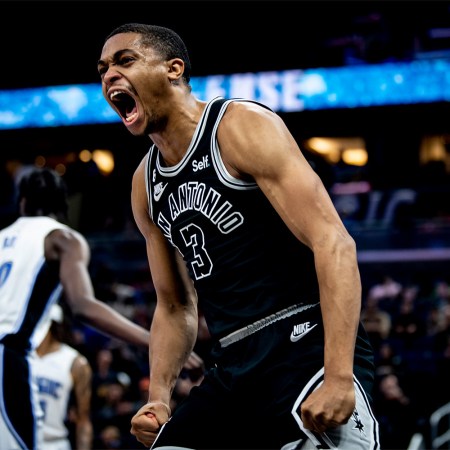The Tampa Bay Buccaneers beat the Seattle Seahawks in Germany this Sunday, thanks to 258 yards from Tom Brady and a defensive effort that proved just enough to hold off Seattle’s second-half surge.
The win put the Bucs one game atop their weak division, and improved Brady’s international record to 4-0. He’s now won two games in London and one in Mexico City, in addition to yesterday’s fixture in Munich. Brady was buoyant throughout his postgame presser, calling the 21-16 victory in Allianz Arena (home to perennial powerhouse FC Bayern Munich) “One of the great football experiences that I’ve ever had. He added: “It says a lot for 23 years in the league.”
That review is music to Commissioner Roger Goodell’s ears. He’s spent years pouring money and time into Europe’s most-populous country (not counting Russia), which claims 19 million NFL supporters. Some Germans are apparently so high on American football they “get married in jerseys.” Teams like the Bucs, the Carolina Panthers, the Kansas City Chiefs and the New England Patriots have secured overseas marketing slots in Germany to encourage fan growth, while Goodell has candidly expressed that he expects to play “at least” four more games in the country through 2025.
The NFL now has a heart-tugging pitch for any non-believers, too: in the final two minutes of yesterday’s game, as Brady and the Bucs were running out the clock, 75,000 German fans sang along to a rendition of John Denver’s “Country Roads.” The crowd launched itself into another verse even after the PA system cut out.
The primary impediment for NFL growth in Germany, as with any European market, has long been logistical. Munich is over 4,000 miles away from New York, and six hours ahead. It’s an extra hour ahead of London, too, which gives many naysayers all the ammo they need — the “how much jet lag is too much” debate has plagued the league since it staged its first game at Wembley Stadium in 2007. With the Seahawks playing a full nine hours ahead of their beds this weekend, there were questions over whether players could possibly adjust in time for kickoff.
But Sunday wasn’t just a win for the Bucs, or the NFL at-large, it was also one for sports science. Players came in equipped and prepared for the dramatic time shift thanks to a bevy of tips, tricks and toys that team experts have accrued and adopted over the last 15 years.
In a sport where coaches generally feel entitled to speak their minds, travel stress wasn’t a theme in pregame conferences (though Leonard Fournette barely got his passport in time). There were some complaints about the grass at Allianz, with Pete Carroll telling reporters he “[wished] the field was firmer” after the game, but the athletes played a customarily chippy, back-and-forth contest, with alternating bouts of brilliance and blunders.
How were the players able to make it look like a normal NFL game? Especially when most of us find it difficult to flying across time zones just to have a drink next to a pool?
Well, they started orienting themselves towards Munich time at the start of the week, pushing their bedtimes (and wake-up times) a half-hour back each night, until an eventual flight across the pond on Thursday afternoon. (No caffeine was permitted past noon on Wednesday or Thursday.) When they arrived in Germany early on Friday, naps of more than 30 minutes were highly discouraged, in order to ensure successful early trips to bed. The players then woke up with the locals on Saturday, had their walk-throughs, and got back to bed, to feel ready for their 3:30 p.m. game on Sunday.
When you see it schemed out like that (courtesy of some clutch digging from The Athletic), an NFL game in Germany doesn’t seem so crazy. A permanent NFL team does — how receptive would a player be to this song and dance six or eight times a year? But performance specialists are now providing players with sleep aids (Dream Water, tart cherry juice, blue light-blocking glasses) and muscle-easing tech (Cape Bionics compression garments, Firefly blood flow stimulators), meant to keep the mind and body as fresh as possible after 10 hours at 30,000 feet. Perhaps we’re heading to a future where these trips become routine.
One thing to keep in mind — North American athletes have gotten really used to flying to the West Coast. Germany is a bigger test than California, obviously, but to head out every couple seasons or so, the trip isn’t an outlandish ask. These players are pros; they know how to fall asleep when they need to. It helps that they aren’t crammed into 37H on a connecting flight to Frankfurt, obviously, but if you can train your body to stiff arm a 300-pound defensive end, you can figure out how to get your 40 winks. Expect more NFL Germany in the years to come…with well-rested stars playing their best.
Thanks for reading InsideHook. Sign up for our daily newsletter and be in the know.


















